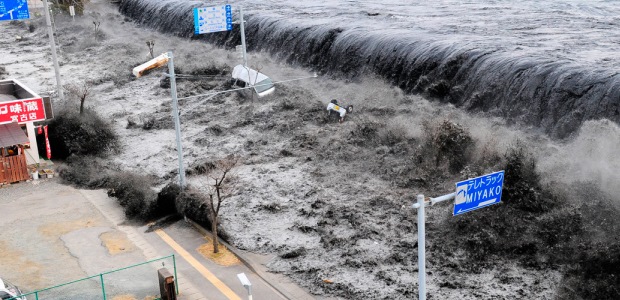
Most Safety-Significant Improvements on Target for 2016 Completion: NRC Chairman
Reflecting on the fourth anniversary of the tsunami that triggered the Fukushima Daiichi nuclear power plant crisis, Stephen G. Burns said in a speech that the Fukushima Daiichi accident "underscored the importance of international cooperation in promoting nuclear safety around the world."
In a March 10 speech prepared for delivery at his agency's 27th annual Regulatory Information Conference, Stephen G. Burns, chairman of the Nuclear Regulatory Commission, provided an update on the safety improvements made by U.S. nuclear power plants during the four years since a March 11, 2011, earthquake and tsunami triggered the Fukushima Daiichi nuclear power plant crisis in Japan. Burns said in the speech that the Fukushima Daiichi accident "underscored the importance of international cooperation in promoting nuclear safety around the world."
The magnitude 9 earthquake caused multiple tsunami waves, up to a maximum height of 128 feet, that hit the Japanese coastline. More than 18,000 people were killed.
A former NRC general counsel, Burns was nominated and confirmed to the commission in November 2014 and then designated as its chairman in January 2015.
He discussed "right sizing" the agency in light of trends in the U.S. industry. A forecasted wave of new reactor licensing did not happen as anticipated, but NRC’s workload increased in other areas, Burns said. "For example, we've seen the agency's – and the industry's – response to the Fukushima Daiichi accident, the unexpected decommissioning of several reactor units, as well as other areas of workload increases, such as cyber security, preparing and reviewing licensing applications for medical isotope production, and small modular reactors. Additionally, the NRC is readying itself to receive and review reactor renewal applications that could propose an extension of an existing reactor's life beyond 60 years. The NRC has also initiated an effort to stabilize and improve the agency's existing reactor amendment licensing backlog through reallocation of resources from lower priority work and an expanded use of contract support. Although we do not anticipate complete resolution of the backlog this fiscal year, the agency is making progress. Accordingly, 40 years following its creation, the NRC's adjustment of its organization, while necessary to remain an effective and efficient regulator, will also need to be well thought out and carefully implemented."
He said NRC and the U.S. nuclear industry "took swift and decisive action to address many of the key lessons learned from [the Fukushima Daiichi] event. Due to the extraordinary effort of the NRC staff and industry, a number of significant enhancements to safety have already been implemented at nuclear power plants, and the vast majority of the most safety-significant actions are targeted for completion by the end of 2016. One of my priorities is to see that we do all that we can to meet that goal. The NRC’s lessons learned initiatives have and will continue to result in significant safety improvements at U.S. nuclear power plants. NRC is committed to bringing the remaining enhancements to timely closure," Burns said, adding that the accident underscored the importance of international cooperation in promoting nuclear safety around the world.
That effort included an IAEA Diplomatic Conference held in February 2015 in Vienna, Austria, related to the Convention on Nuclear Safety. The United States and other Contracting Parties unanimously adopted the Vienna Declaration on Nuclear Safety there, a document intended to strengthen each Contracting Party's commitment to nuclear safety in the wake of the Fukushima Daiichi accident. "Under the three principles of the Vienna Declaration, new nuclear power plants are to be designed, sited, and constructed consistent with the objective of preventing accidents during commissioning and operation; comprehensive and systematic safety assessments are to be carried out periodically and regularly for existing facilities during their lifetime; and national requirements and regulations to address these principles are to take into account the relevant IAEA Safety Standards and other good practices. The NRC will continue to work with its counterparts to ensure these principals are given meaning, as we have already done through the safety enhancements adopted in this country since the accident," he explained.